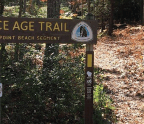

On January 8, 1902, the morning rail commute into Manhattan took a tragic turn. In one of many tunnels beneath Park Avenue, a New York Central locomotive bound for Grand Central Station rammed the rear of a commuter train waiting to enter the terminal. The steam engine plowed through the parked train’s last two cars, killing 17 on impact and injuring three dozen, many of whom were scalded horribly by steam from the locomotive’s ruptured boiler. The wreck made national news in stories salted with grisly details.
A jury acquitted New York Central engineer John Wisker of manslaughter, ruling that there was no way Wisker could have seen the stop signal in the congested tunnel, obscured as the marker was by steam and smoke from heavy coal-fired locomotive traffic.
Authorities deemed the New York Central ultimately responsible for the accident because “during the past ten years said officials have been repeatedly warned by their locomotive engineers and other employes [sic] of the dangerous condition existing in said tunnel… and they have failed to remedy said conditions.” The next year the New York State Legislature passed a law prohibiting steam locomotive traffic on Manhattan Island after July 1, 1908.
Steam had powered locomotives since 1830, when the Baltimore & Ohio became the first common carrier railroad in the United States. But after 70 years and 193,000 miles of track, steam locomotives were falling behind the times—a burgeoning nuisance and a hazard in the new century’s expanding cities.
Rail-borne steam and smoke obscured not only signage but skylines. Tunnels were darkly satanic. Locomotives, loud and dirty, often required switching that knotted up train movement. Steam trains’ immense water tanks and Brobdingnagian maintenance infrastructure gobbled real estate in areas where space was at a premium. America, on the verge of becoming a global manufacturer, needed locomotives to run on something more dynamic and forward-looking than






